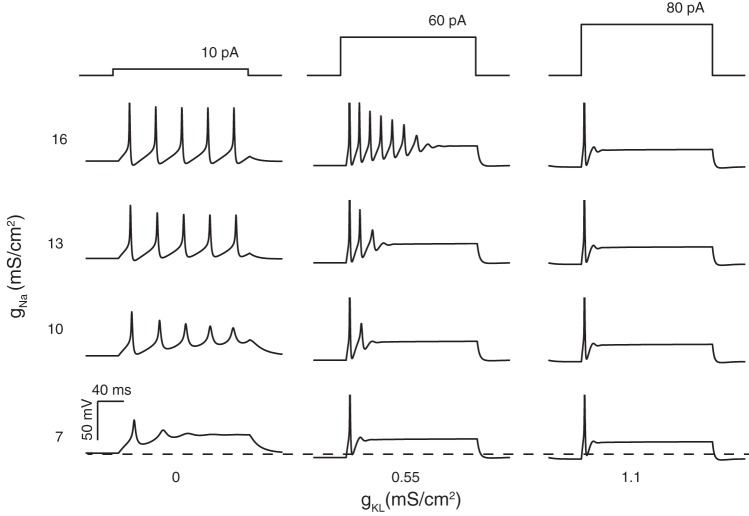Fig. 4.
Modeled neurons have current-step evoked firing patterns that depend on the maximum conductance of gKL and gNa. Responses are shown at the lowest current step (current threshold ±0.5 pA) that yielded an action potential. Left column: models with gKL = 0 exhibited continual spiking throughout the duration of the current step. Smaller values of gNa produced shorter action potentials. At the lowest value of gNa (bottom row), full action potentials did not form and the modeled neuron responded with sustained voltage oscillations. Interspike/interoscillation intervals varied little during the simulation time and averaged ∼40 ± 0.5 ms (14 intervals were pooled across all responses in left column). Middle column: adding gKL to the model produced accommodation to the firing patterns with the amplitude and number spikes generated decreasing with continued current injection. At any fixed value for gNa (e.g., 10 mS/cm2), the addition of gKL hyperpolarized the resting membrane potential and increased the current amplitudes needed to initiate spiking (across all 3 columns, current threshold increased from 10 to 80 pA). The presence of gKL also made the first action potential larger and faster and the timing between adjacent action potentials shorter than in left column, where gKL was missing. On average, the interspike/interoscillation intervals were 16 ± 0.4 ms (13 intervals were pooled across all responses in middle column). Right column: at gKL=1.1 mS/cm2 (the largest value used), the model responded with a single action potential for all current steps applied.

